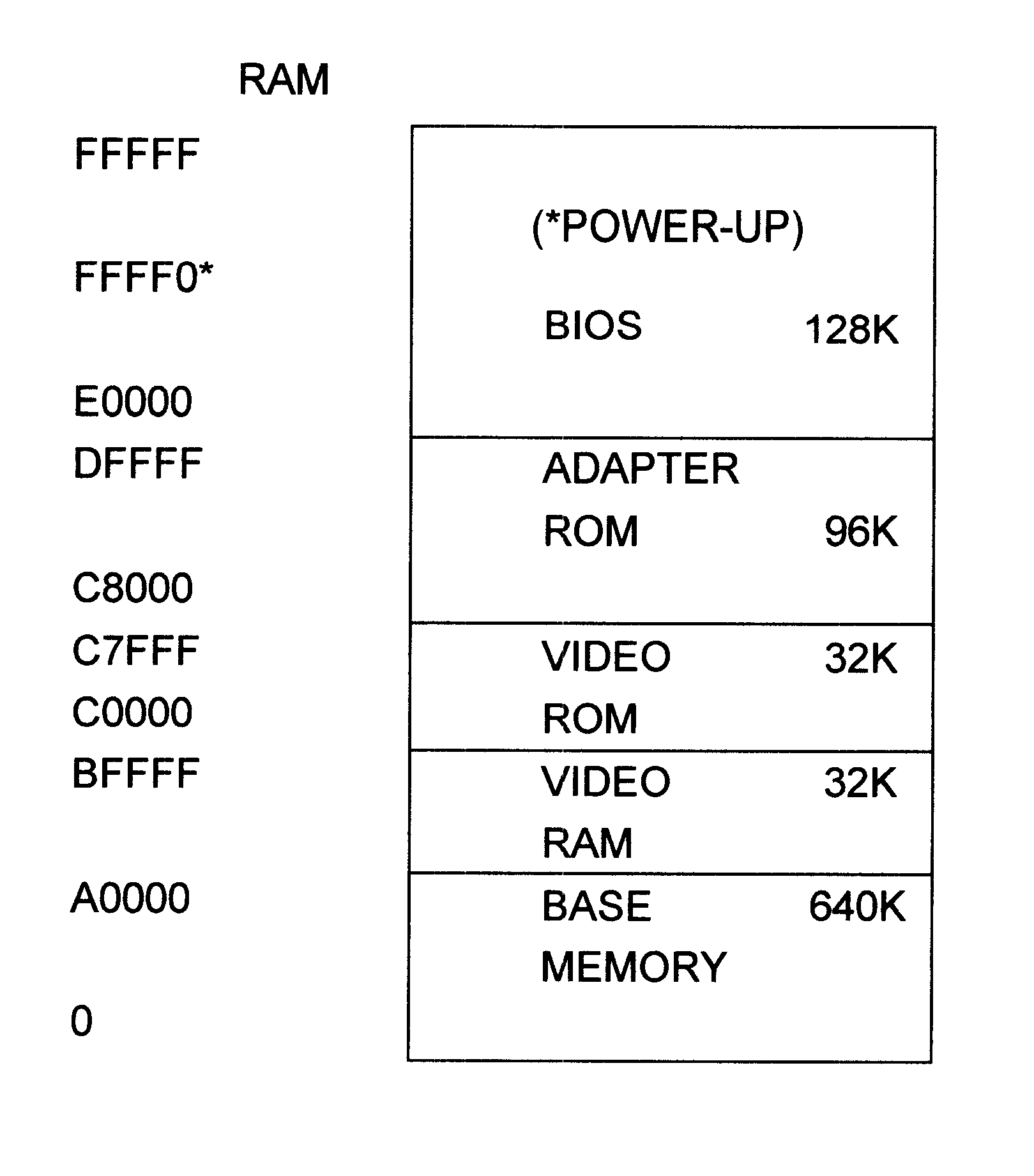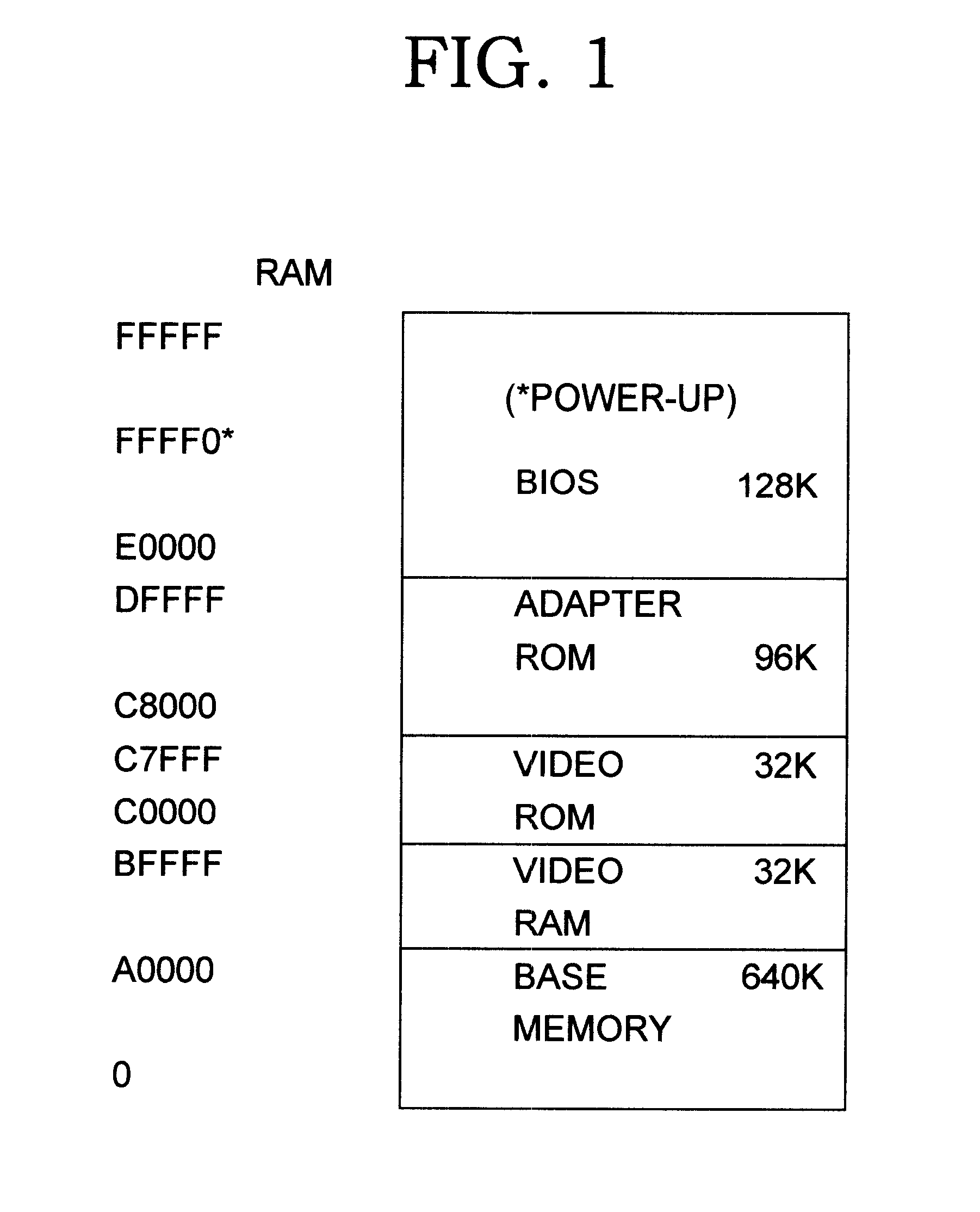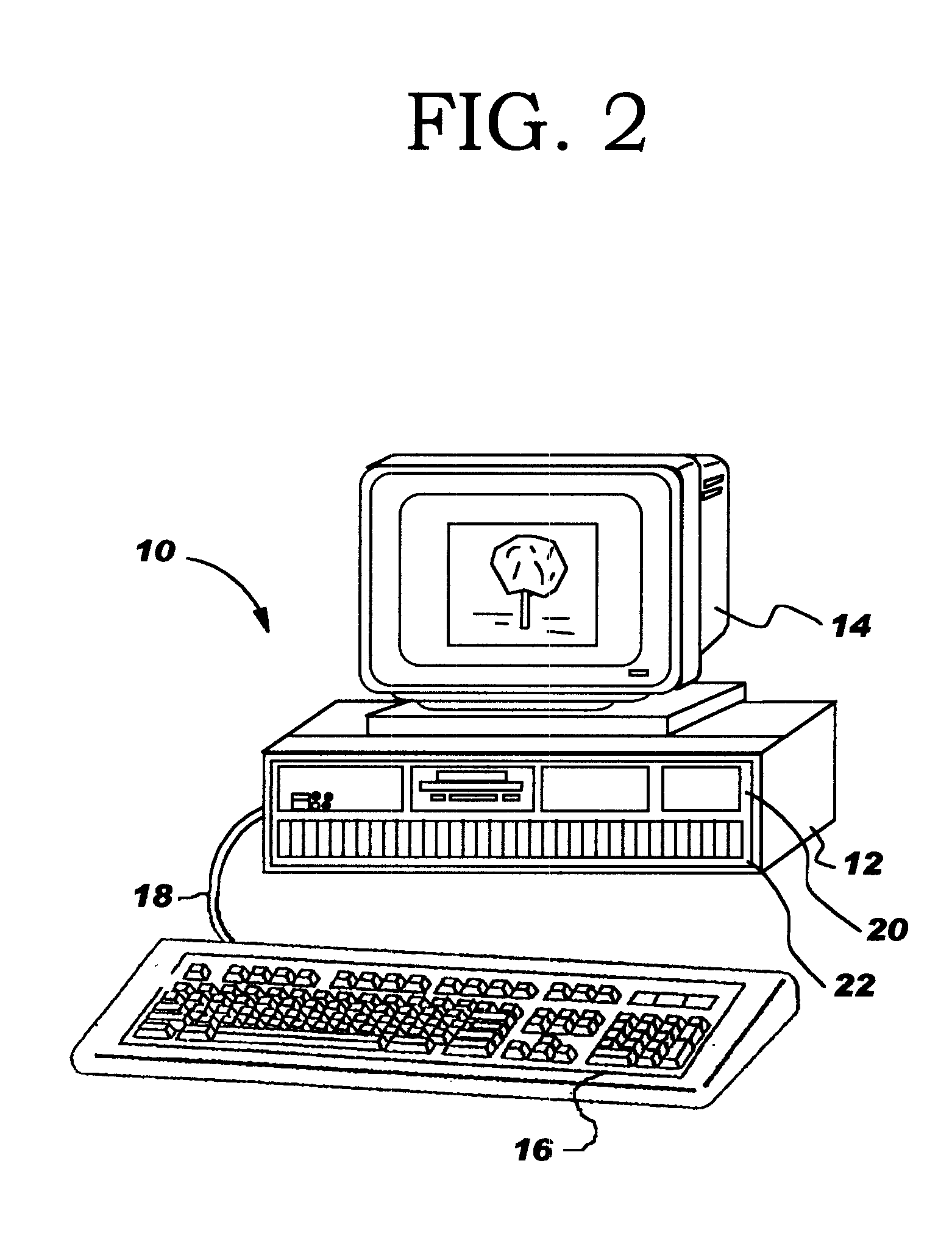Data processor having BIOS packing compression/decompression architecture
a data processor and bios code technology, applied in the field of data processing, can solve the problems of insufficient size of the read only memory (rom) resident in the pc for storing bios code, bios will generate an error message, and insufficient size of the existing bios rom to accommodate the necessary services, so as to reduce the time required for decompression of bios code, maintain compatibility with existing pc architecture, and reduce the time required for bootstrapping
- Summary
- Abstract
- Description
- Claims
- Application Information
AI Technical Summary
Benefits of technology
Problems solved by technology
Method used
Image
Examples
Embodiment Construction
)
With reference now to the Figures, and in particular with reference to FIG. 2, a personal computer, or PC, designated 10 is of the environment to which the invention has particular.utility. The computer 10 which preferably, but not necessarily, is of a type utilizing an IBM Personal Computer or similar system, includes a console housing 12 within which circuit boards containing the necessary circuitry including microprocessor and BIOS chips, controllers, random access memory and other hardware are arranged. The computer will also include a video display 14 and a keyboard 16 connected into the housing 12 through cable 18. Mass storage media include a hard drive within the housing and not accessible to the user, and user accessible floppy disk as well as, optionally, CD-ROM drives, 20 and 22.
The architecture of computer system 10, depicted in FIG. 3, is based on a system bus 22 on which data is passed between components of the computer, including a central processing unit (CPU) 24. D...
PUM
 Login to View More
Login to View More Abstract
Description
Claims
Application Information
 Login to View More
Login to View More - R&D
- Intellectual Property
- Life Sciences
- Materials
- Tech Scout
- Unparalleled Data Quality
- Higher Quality Content
- 60% Fewer Hallucinations
Browse by: Latest US Patents, China's latest patents, Technical Efficacy Thesaurus, Application Domain, Technology Topic, Popular Technical Reports.
© 2025 PatSnap. All rights reserved.Legal|Privacy policy|Modern Slavery Act Transparency Statement|Sitemap|About US| Contact US: help@patsnap.com



